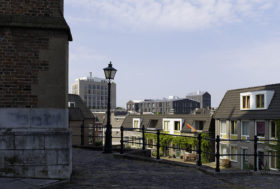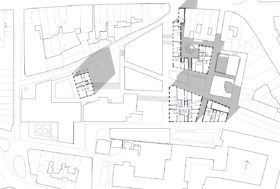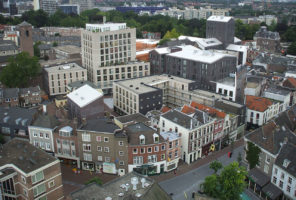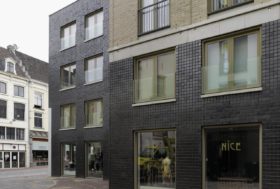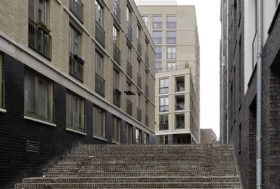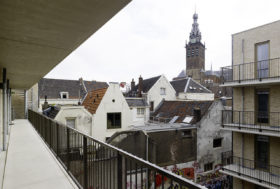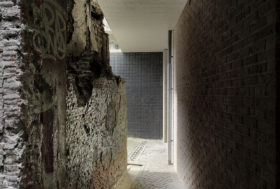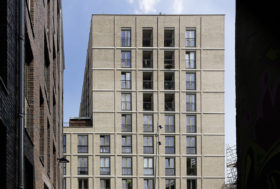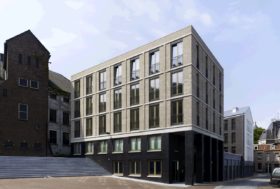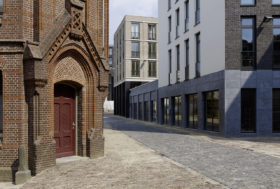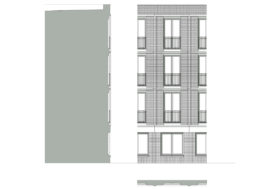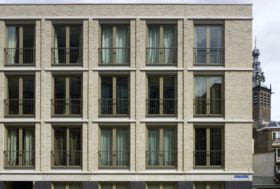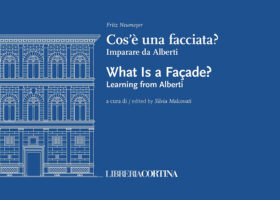Hessenberg
85 appartements, 2 shops & parking, Nijmegen
Public & private housing
Client: Heijmans, Amersfoort
2005 – 2010
‘With a very precise, specific urban design and a relatively neutral, general architecture, a piece of city has been realised that has the potential to blend into the existing almost unnoticed. The plan is extremely subtle but does not try to please.’ Marieke van Ouwerkerk in De Architect
Hessenberg is a spot in the inner city of Nijmegen with a rich history which can be traced back to the Roman Occupation. In recent centuries the site has been occupied by monasteries and the regional newspaper De Gelderlander. Within a masterplan by Bob van Reeth four blocks were developed. They are randomly scattered over the project and sit on large shared underground parking garages. HvdH based the design on plain facade principles. Anthracite engineering bricks form a solid plinth. The upper stories have a gridded facade. Horizontal lintels are juxtaposed by brick piers, between which sit recessed brickwork planes with window frames. The bricks of the upper floors are cream. All window frames are made of champagne coloured aluminum. At the upper floors these are supplied with a steel railing, in the plinth they are supplied with glass railings.
The facades are akin to the architecture of Bob van Reeth. Each building has its own urban role in the ensemble. The typology of the buildings results in differences. The facade diagram is refined in each case and adjusted by varying the height of the plinth and width of the windows. HvdH closely collaborated with AWG and landscape architect MTD. The architectural imagery was not so much generated by strict city image planning or aesthetic supervision, but by an inspiring dialogue resulting in a lively urban fragment of the city of Nijmegen with natural differences in handwriting.
The Hessenberg has been extensively published in such magazines as Architectenweb Magazine, De Architect, Architecture Today, Midcomfort, Bauwelt and Architectenweb Magazine. The project received the Municipal Architecture Award of Nijmegen 2011 and was nominated for the Mies van der Rohe Award and the Fritz Högerpreis 2011. In his book What is a façade? Learning from Alberti / Cos’è una facciata? Imparare da Alberti, the authoritative German architectural theorist Prof. Fritz Neumeyer uses the project in a series of famous exemplary projects beginning with designs by Leon Battista Alberti and ending with work by Hans Kollhoff.
